Aug . 09, 2025 02:40 Back to list
Premium Kids Bicycles & Children's Bike Trailers | Family Fun
The journey of childhood is marked by exploration, growth, and the exhilarating discovery of new abilities. Central to this journey for many children is their first bicycle. Far from being simple toys, modern kids bicycle designs incorporate cutting-edge materials, ergonomic principles, and safety features that rival adult counterparts. This comprehensive guide explores the evolution, technical sophistication, and diverse applications of children's bikes, alongside the related innovation of children's bicycle trailers, offering insights for parents, manufacturers, and industry enthusiasts alike.
Industry Trends and Technological Evolution in Children's Cycling
The global market for children's bicycles is experiencing robust growth, driven by increasing parental awareness of the benefits of outdoor activity, advancements in bicycle design, and a rising demand for safer, more durable, and aesthetically pleasing options. According to market research by Grand View Research, the global children's bicycle market size was valued at USD 5.7 billion in 2022 and is expected to grow at a compound annual growth rate (CAGR) of 6.3% from 2023 to 2030. This growth is fueled by several key trends:
- Lightweighting: A significant trend is the shift towards lighter frame materials, primarily aluminum alloys, which make bikes easier for children to handle, control, and propel. This enhances the learning experience and reduces fatigue.
- Safety Enhancements: Beyond just handbrakes, modern designs incorporate features like integrated chain guards, wider tires for stability, low standover heights for easy mounting/dismounting, and comprehensive safety certifications (e.g., CPSC in the US, EN 14765 in Europe).
- Ergonomic Design: Bikes are increasingly tailored to children's specific anatomy, with adjustable components (seat post, handlebars), shorter reach brake levers, and child-specific geometry to ensure comfort and proper riding posture.
- Specialization: The market now offers specialized kids bicycle types, including balance bikes for early learners, mountain bikes for young adventurers, and even electric-assist options for older children, broadening the appeal.
- Sustainable Materials: A nascent but growing trend involves using recycled or sustainably sourced materials in bike components, aligning with broader environmental consciousness.
- Integration of Smart Features: Some high-end models may include GPS tracking for parental peace of mind or integrated lighting systems.
The Rise of Children's Bicycle Trailers
Complementing the kids bicycle market, children's bicycle trailers have also seen a surge in popularity. These versatile attachments allow parents to safely transport younger children, groceries, or gear while cycling. Modern trailers boast features like robust aluminum frames, padded seating with five-point harnesses, roll cages for impact protection, weather-resistant covers, and often convertibility into strollers or jogging prams. The industry has embraced designs that prioritize comfort, safety, and ease of attachment, making family cycling adventures more accessible than ever.
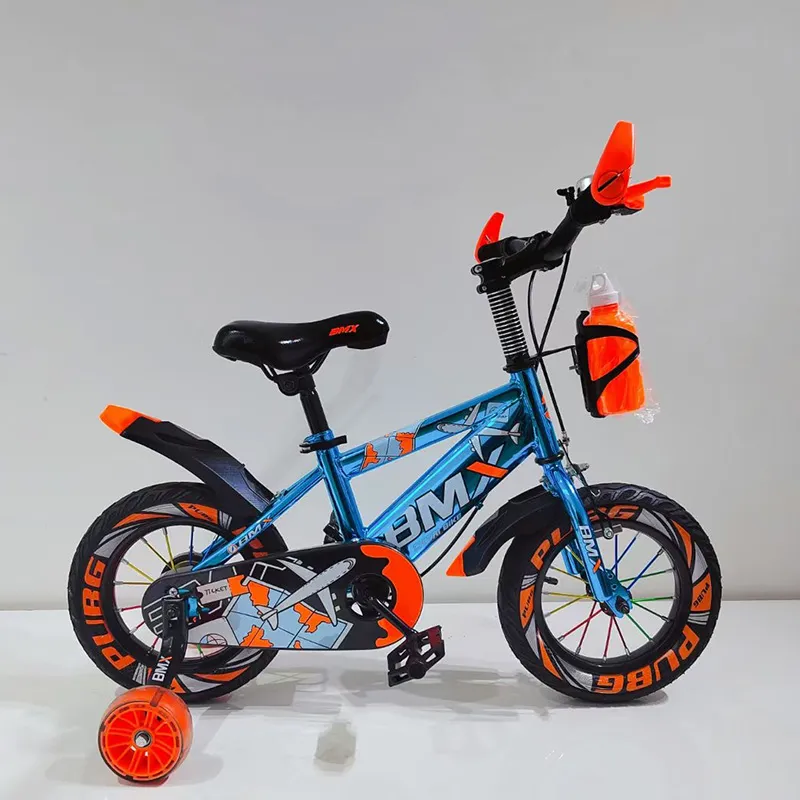
Technical Parameters and Advanced Features of Modern Children's Bikes
When selecting a kids bicycle, understanding its technical specifications is crucial for ensuring a safe, comfortable, and effective riding experience. The product, "The best 12 /16/20 Inch Children's Bike for3 4 5 6 7 Years with Handbrake, Mudguard, Kettle and stand, PU flash wheel" from Yanline Bike, exemplifies many of these advanced features.
Key Technical Parameters:
- Wheel Size: Typically 12, 16, or 20 inches, corresponding to age and height ranges.
- 12-inch: Ideal for 2-4 years old (height 85-105 cm), often used as a first pedal bike after a balance bike.
- 16-inch: Suitable for 4-6 years old (height 100-120 cm), a common transitional size.
- 20-inch: For 6-8 years old (height 115-135 cm), often includes multiple gears in higher-end models.
- Frame Material: Most commonly high-tensile steel for durability and cost-effectiveness, or aluminum alloy for lighter weight and corrosion resistance. Aluminum is preferred for reducing bike weight, which is critical for children's control.
- Braking System:
- Handbrake (V-Brake or Caliper): Essential for teaching children proper braking technique and providing reliable stopping power. Many kids bicyclees, like the Yanline model, feature front and rear handbrakes.
- Coaster Brake (Pedal Backwards): Common on smaller bikes, offering an intuitive braking method for beginners.
- Tires: Width and tread pattern vary; wider tires (e.g., 1.95-2.125 inches) provide better stability and traction, especially on varied terrain.
- Components & Accessories:
- Mudguard: Protects riders from splashes.
- Kettle (Water Bottle): Encourages hydration during rides.
- Kickstand: Convenient for parking and preventing damage.
- PU Flash Wheel: Polyurethane (PU) wheels with integrated LED lights that illuminate when spinning, adding a fun, visible, and safety-enhancing feature, particularly in low-light conditions.
- Chain Guard: Fully enclosed to prevent clothes from snagging and protect little fingers.
- Training Wheels: Often included with 12-inch and 16-inch bikes for learning stability.
- Weight: A critical factor. Lighter bikes are easier for children to maneuver, especially uphill or when recovering from wobbles. A bike ideally should weigh no more than 30-40% of the child's body weight.
Data Visualization: Kids Bicycle Size Guide
Choosing the right size kids bicycle is paramount for safety, comfort, and confidence. Here's a general guide:
| Wheel Size (Inches) | Age Range (Years) | Child Height (cm) | Inseam (cm) | Typical Features |
|---|---|---|---|---|
| 12 | 2 - 4 | 85 - 105 | 35 - 45 | Training wheels, coaster brake, often single speed. |
| 16 | 4 - 6 | 100 - 120 | 45 - 55 | Training wheels (optional), handbrakes (front/rear), single speed. |
| 20 | 6 - 8 | 115 - 135 | 50 - 65 | Handbrakes, often multiple gears (geared models), no training wheels. |
| 24 | 8 - 11 | 130 - 145 | 60 - 75 | Multiple gears, handbrakes, suspension options. |
| 26 | 11+ | 145+ | 70+ | Often entry-level adult bikes, full features. |
Note: These are general guidelines. Always measure a child's inseam and test ride the bike if possible.
Application Scenarios and Real-World Experience
A kids bicycle is more than just a mode of transport; it's a tool for developing balance, coordination, spatial awareness, and independence. Its application scenarios are as diverse as childhood itself:
- Neighborhood Rides: The most common use, allowing children to explore their immediate surroundings, ride with friends, and participate in family outings.
- Park and Trail Riding: Bikes with sturdier frames and wider tires are perfect for light off-road paths, introducing children to diverse terrains and fostering an appreciation for nature.
- Learning and Development: Balance bikes are foundational, teaching dynamic balance without pedals. Transitioning to a 12-inch or 16-inch pedal bike builds confidence and motor skills.
- Sport and Recreation: For older children, 20-inch bikes with gears can be used for more structured cycling activities, including local races or longer recreational rides.
- Family Adventures with Children's Bicycle Trailers: For families with infants or toddlers, a children's bicycle trailer opens up possibilities for longer bike rides, vacations, and commuting, allowing the whole family to enjoy cycling together regardless of the youngest member's ability to ride independently. These trailers are perfect for trips to the park, grocery store, or even extended bike touring.
Customer Feedback and Practical Application
Parents consistently praise bikes that combine safety with ease of use. For instance, feedback on designs featuring lightweight aluminum frames frequently highlights how much easier it is for children to control the bike, particularly when learning to start and stop. The inclusion of responsive handbrakes and a low standover height also receives high marks for boosting a child's confidence. The "PU flash wheel" feature, while seemingly minor, often becomes a major selling point for children, adding an element of fun and increasing visibility, which parents appreciate for safety reasons.
One parent shared, "My daughter struggled with her old, heavy steel bike. Switching to a lighter aluminum 16-inch model was a game-changer. She picked it up instantly, and the handbrakes were easy for her small hands to manage. Plus, she absolutely loves the flashing wheels, making evening rides much safer and more exciting." This illustrates the real-world impact of thoughtful design choices on a child's cycling experience.
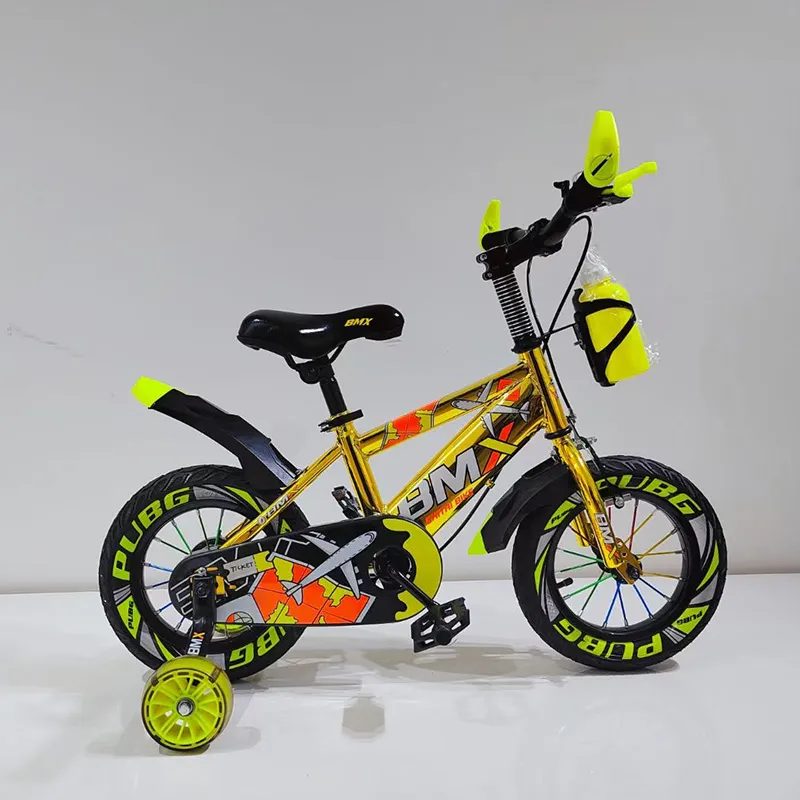
Technical Advantages and Manufacturing Excellence
The technical superiority of a high-quality kids bicycle stems from meticulous design, advanced material selection, and precision manufacturing processes. Yanline Bike's commitment to delivering durable, safe, and engaging children's bikes is evident in its production methodologies and adherence to stringent quality standards.
Product Material Selection and Advantages:
- High-Tensile Steel vs. Aluminum Alloy Frames:
- High-Tensile Steel: Offers excellent strength-to-cost ratio, providing robust durability and absorbing road vibrations well. It's often used for its resilience and ability to withstand rough handling by children.
- Aluminum Alloy: Lighter than steel, making the bike easier for children to lift, maneuver, and accelerate. It is also corrosion-resistant, extending the bike's lifespan, especially in humid or coastal environments. The weight advantage significantly impacts a child's ability to learn and enjoy cycling without being bogged down by a heavy machine.
- Polyurethane (PU) Wheels: Used for the "flash wheel" feature. PU offers excellent durability, shock absorption, and quiet rolling. Its superior grip enhances safety, while the integrated LEDs provide visibility and entertainment.
- Rubber Tires with Butyl Inner Tubes: Provides a balance of grip, puncture resistance, and cushioning. The quality of rubber impacts traction and longevity.
- Non-toxic Paints and Finishes: All materials, especially paints and grips, must be non-toxic and lead-free, adhering to international safety standards like EN 71 (Toy Safety Directive) to protect children's health.
Manufacturing Process of a Kids Bicycle:
The creation of a kids bicycle involves a precise sequence of steps, ensuring quality and consistency:
- Material Sourcing & Preparation:
- Raw materials (steel tubing, aluminum billets, plastic pellets for accessories) are sourced from certified suppliers.
- Each batch undergoes preliminary quality checks for composition and integrity.
- Frame Manufacturing:
This is the core of the bike. For steel frames, tubes are cut, bent (bending), and then welded together using advanced MIG/TIG welding techniques to form the frame and fork. For aluminum frames, techniques might include hydroforming for complex shapes and robotic welding for precision and strength. Each weld joint is critical for structural integrity and is visually inspected. (See Diagram Concept below)
[Diagram Concept: Manufacturing Flow for Kids Bicycle Frame]
Steel/Aluminum Stock --> Cutting & Bending --> Brazing/Welding (Key Node: Joint Strength) --> Grinding & Polishing (Smooth Surfaces) --> Heat Treatment (for strength, if applicable) --> Frame Quality Check (Alignment, Weld Integrity) --> Priming --> Painting/Coating (Key Node: Non-toxic Finish) --> Curing --> Final Frame Inspection. - Component Manufacturing:
- Handlebars, Seat Posts, Cranks: Often produced through precision CNC machining or forging for strength and exact dimensions.
- Plastic Parts (Mudguards, Chain Guards): Created via injection molding, ensuring consistent shapes and durable finishes.
- Wheels: Rim forming, spoke lacing, and hub assembly. PU flash wheels involve molding the PU around the hub with embedded LED circuitry.
- Brakes: Lever casting, cable assembly, caliper/V-brake arm fabrication.
- Surface Treatment & Finishing:
After frame fabrication, frames undergo meticulous cleaning and pre-treatment to ensure optimal paint adhesion. Powder coating or wet painting with child-safe, lead-free paints is applied in multiple layers for durability and vibrant aesthetics. This process also provides anti-corrosion properties, protecting the frame from rust and environmental wear.
- Assembly:
Components (wheels, handlebars, seat, pedals, chain, brakes, accessories like mudguards and kettle) are precisely assembled onto the painted frame on an assembly line. This stage requires skilled technicians to ensure all parts are correctly fitted and torqued to specification.
- Quality Control & Testing:
Each kids bicycle undergoes rigorous multi-point inspection. This includes:
- Structural Integrity Tests: Ensuring frame and fork can withstand impacts and stress.
- Brake Performance Tests: Checking stopping power and lever responsiveness (ANSI/CPSC requirements).
- Steering & Wheel Alignment: Verifying smooth steering and true wheels.
- Component Functionality: Testing pedals, chain, and accessories.
- Safety Standards Compliance: Adherence to international standards like ISO 8098 (Cycles — Safety requirements for bicycles for young children) or regional standards such as CPSC 1512 (USA) and EN 14765 (Europe). Yanline Bike ensures its products meet these stringent benchmarks, providing parents with peace of mind regarding the product's safety and reliability.
- Packaging:
Bikes are carefully packaged to prevent damage during transit, often partially disassembled with clear assembly instructions for end-users.
Use Lifetime: A well-manufactured kids bicycle designed with durable materials and proper assembly can easily last for several years, often outliving a child's growth phase and being passed down or resold. The lifespan is enhanced by robust frames, quality bearings, and corrosion-resistant finishes.
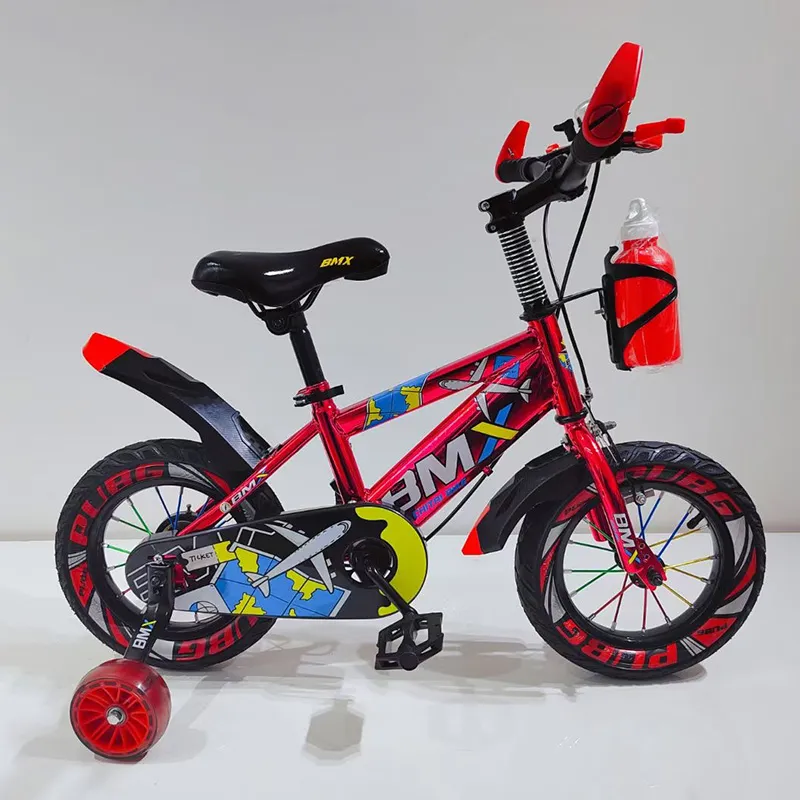
Manufacturer Comparison and Yanline Bike's Edge
The kids bicycle market is competitive, featuring both global giants and specialized boutique brands. While many manufacturers focus on aesthetics or lowest price points, leading brands distinguish themselves through a commitment to engineering, safety, and user experience. Yanline Bike positions itself by offering a blend of high-quality components, adherence to international safety standards, and thoughtful design tailored specifically for children.
Key Differentiators in the Market:
When comparing manufacturers, several factors stand out:
- Material Quality: Brands using higher-grade aluminum alloys or advanced steel tubing often produce lighter, more durable bikes.
- Component Specification: The quality of brakes, tires, bearings, and drivetrains directly impacts performance and longevity. Yanline Bike's choice of reliable handbrakes and durable PU flash wheels demonstrates a focus on practical features that enhance both safety and fun.
- Safety Certifications & Testing: Top manufacturers prominently display their adherence to CPSC, EN, or ISO standards, indicating rigorous testing beyond basic requirements.
- Ergonomics & Child-Specific Design: True child-centric design involves more than just shrinking an adult bike. It means designing components like brake levers for small hands, low Q-factors (distance between pedals) for comfortable pedaling, and appropriate gearing.
- After-Sales Support & Warranty: A strong warranty and accessible customer service indicate a manufacturer's confidence in their product and commitment to customer satisfaction.
Why Yanline Bike Stands Out:
Yanline Bike, through its product "The best 12 /16/20 Inch Children's Bike for 3 4 5 6 7 Years," illustrates several competitive advantages:
- Balanced Design: The bikes are designed to be lightweight enough for easy handling but robust enough for the rigors of child play. This balance is crucial for encouraging consistent use.
- Integrated Safety & Fun: The combination of reliable handbrakes, mudguards (for practical use), and the unique "PU flash wheel" (for visibility and excitement) shows a holistic approach to child-friendly design. The flash wheels, in particular, provide an extra layer of visibility in low light, adding a safety dimension often overlooked by other brands focused solely on structure.
- Comprehensive Accessory Package: The inclusion of a kettle and stand adds immediate utility and value, making the bike ready for adventure right out of the box, without requiring additional purchases.
- Quality Manufacturing: As detailed in the manufacturing process section, Yanline Bike employs established processes like precision welding, meticulous painting, and multi-stage quality control, ensuring each kids bicycle meets high performance and safety standards.
Yanline Bike's commitment is reflected in its adherence to relevant industry standards and its focus on providing a product that supports a child's development in a safe and enjoyable manner. While direct quantitative comparison data against other specific brands is proprietary, Yanline's product specifications and features position it as a strong contender in the segment focused on safety, durability, and child-centric innovation.
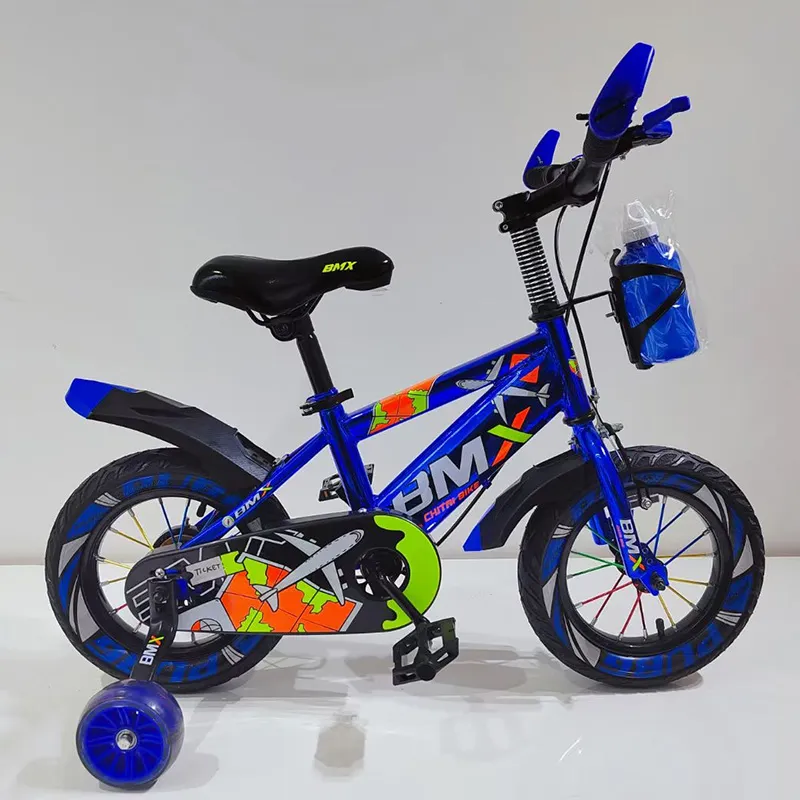
Customization Solutions and Future Innovations
While standard models cater to broad needs, the demand for personalized kids bicyclees and children's bicycle trailers is growing. Manufacturers like Yanline Bike offer various customization options to meet specific market demands or individual preferences.
Customization Options:
- Color and Graphics: Beyond standard colorways, manufacturers can offer custom paint schemes, decals, or themed graphics to align with branding or child preferences.
- Component Upgrades: Options for lighter wheels, specific tire types (e.g., knobby for off-road, smoother for urban), or different braking systems can be integrated for bulk orders.
- Accessory Bundling: Tailored packages including specific baskets, bells, safety flags, or unique training wheel designs.
- Branding: For retailers or promotional purposes, bikes can be branded with custom logos or specific product names.
- Size and Geometry Adjustments: For large orders, slight modifications to frame geometry (e.g., lower standover height, shorter reach) could be implemented to meet specific regional ergonomic requirements or preferences.
Future Innovations in Kids Cycling:
The children's cycling market is ripe for innovation. Trends point towards:
- Smart Bikes: Integration of IoT features for parental monitoring (location tracking, speed limits), gamified learning experiences, or even adaptive pedal assist for varying terrains.
- Modular Designs: Bikes that can easily transform (e.g., balance bike to pedal bike, or from a small size to a larger size with minimal part replacement) to grow with the child, reducing waste and increasing value.
- Advanced Lightweight Materials: Further exploration of carbon fiber composites or bio-based plastics to achieve even lighter weights without compromising durability.
- Enhanced Safety Systems: More sophisticated integrated lighting, reflective materials, and perhaps even collision avoidance sensors.
- Eco-Friendly Production: Increased use of recycled materials, closed-loop manufacturing, and reduced energy consumption in production.
- Integrated Suspension: For more adventurous young riders, improved lightweight suspension systems will enhance comfort and control on rougher trails.
Application Cases and Success Stories
The practical application of well-designed kids bicyclees and children's bicycle trailers is evident in countless real-world scenarios, fostering both individual skill development and family bonding.
Case Study 1: Community Cycling Program
A non-profit organization focused on promoting cycling among underprivileged youth collaborated with a kids bicycle manufacturer to provide sturdy, lightweight 16-inch and 20-inch bikes. The program emphasized bikes with reliable handbrakes and durable tires, similar to the Yanline model. Over a year, over 500 children learned to ride, improving their physical health and self-confidence. The easy-to-handle nature of the bikes significantly reduced the learning curve, with many children mastering cycling within a week. The bikes' robust construction ensured they could withstand constant use and diverse terrains encountered in urban and suburban environments, demonstrating their long-term value.
Case Study 2: Family Touring with a Children's Bicycle Trailer
The Smith family, avid cyclists, embarked on a two-week cycling tour across national parks. With their youngest child, a two-year-old, they utilized a high-quality children's bicycle trailer. The trailer, featuring a sturdy aluminum frame, comfortable padded seats, and an all-weather cover, allowed the toddler to nap comfortably during long stretches and enjoy the scenery when awake. The trailer's quick-release hitch system enabled easy attachment and detachment, transforming into a stroller for off-bike excursions. This allowed the entire family to participate in the adventure, showcasing the trailer's utility in enabling extended family outdoor activities that would otherwise be impossible with young children.
Case Study 3: Retailer Success with Integrated Features
A major toy and sporting goods retailer introduced Yanline Bike's "The best 12 /16/20 Inch Children's Bike" line, specifically highlighting the "PU flash wheel" feature. They observed a significant increase in sales compared to standard models. The unique selling proposition of the light-up wheels captivated children and appealed to parents concerned about visibility and safety during evening rides. The inclusion of the mudguard, kettle, and stand also resonated with parents looking for a complete, ready-to-ride package, reducing the need for additional accessory purchases and enhancing the bike's perceived value. This demonstrates how thoughtful, integrated features can drive market success.
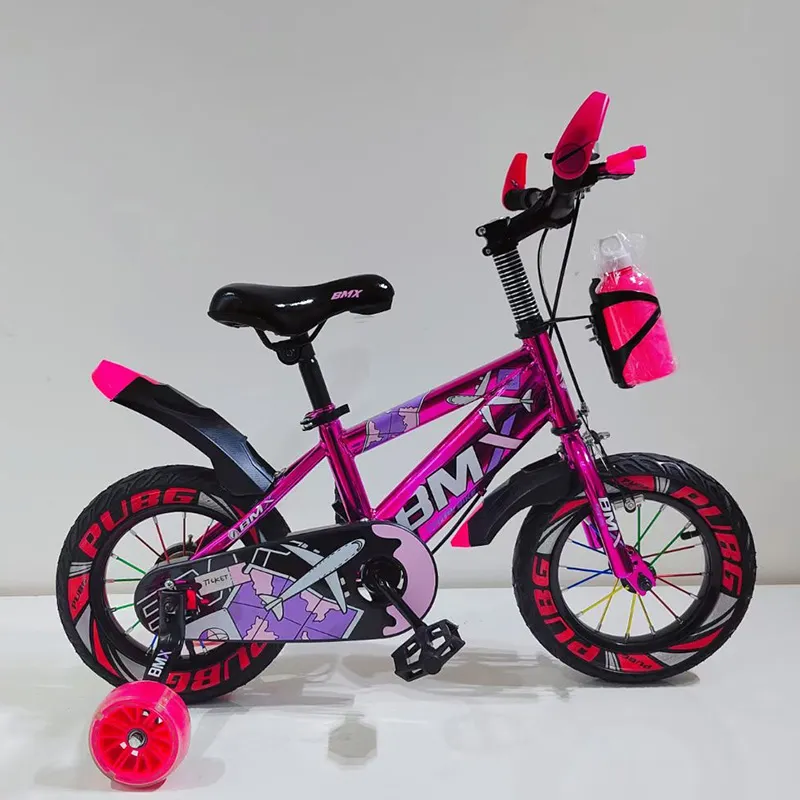
Trustworthiness and Customer Support
Building trust with consumers, especially when it comes to children's products, is paramount. Yanline Bike's commitment to transparency, quality assurance, and comprehensive customer support underpins its reliability.
Quality Assurance and Certifications:
Products like "The best 12 /16/20 Inch Children's Bike" adhere to strict international safety and quality standards, including:
- ISO 9001: Certification for Quality Management Systems, ensuring consistent production quality.
- CPSC 1512 (U.S. Consumer Product Safety Commission): Mandatory safety standard for bicycles, covering structural integrity, brake performance, and component safety.
- EN 14765 (European Standard for Bicycles for Young Children): Specifies safety requirements and test methods for children's bicycles with a maximum saddle height of 635 mm.
- EN 71 (European Toy Safety Directive): Relevant for aspects like non-toxic materials, especially paints and small parts.
These certifications are not just labels; they represent rigorous testing for factors such as frame fatigue, brake efficiency, chain strength, and hazardous substance content, assuring parents of the product's safety profile.
Delivery and Warranty:
- Delivery Timelines: Standard delivery for in-stock items typically ranges from 5-10 business days domestically, with international shipping varying based on destination and customs. Bulk orders or customized solutions will have specific production and delivery schedules communicated at the time of order.
- Warranty Commitment: Yanline Bike offers a comprehensive warranty, typically covering the frame and fork for 5 years against manufacturing defects, and components for 1-2 years. This demonstrates confidence in the product's durability and provides customers with long-term peace of mind. Specific terms and conditions are clearly outlined in the product documentation.
- Return Policy: A straightforward return policy for unused, defective, or incorrectly shipped items within a specified period (e.g., 30 days) further enhances customer trust.
Customer Support:
Accessible and responsive customer support is critical. Yanline Bike provides multi-channel support including:
- Online Help Center: FAQs, assembly guides, troubleshooting tips.
- Email Support: Dedicated support team for inquiries and issue resolution.
- Phone Support: Direct line for immediate assistance.
- Spare Parts Availability: Ensuring common wear-and-tear parts (e.g., tires, inner tubes, brake pads) are readily available for purchase or warranty claims.
Professional FAQ: In-depth Insights
Understanding the nuances of kids bicycle technology helps parents and educators make informed decisions. Here are answers to common technical questions:
- Q1: What is the significance of "Inseam" when choosing a kids bicycle?
- A1: Inseam, the measurement from the crotch to the floor, is the most crucial factor for sizing a kids bicycle. For a pedal bike, a child should be able to stand over the top tube with flat feet on the ground and have at least 1-2 inches of clearance. This ensures they can easily dismount and prevent falls, boosting confidence and safety.
- Q2: Why are handbrakes preferred over coaster brakes for older children's bikes?
- A2: While coaster brakes (pedaling backward to stop) are intuitive for very young learners, handbrakes offer more precise control, better modulation (feathering the brake for gradual stopping), and are essential for developing skills needed for future geared bikes. They also allow children to backpedal without braking, which is crucial for maneuvering.
- Q3: What does "low Q-factor" mean for a kids bicycle, and why is it important?
- A3: The "Q-factor" is the horizontal distance between the two pedal attachment points. A low Q-factor means the pedals are closer together, aligning better with a child's narrower hip width. This allows for more natural and efficient pedaling, reducing strain on knees and hips, and improving balance and comfort.
- Q4: How do "PU flash wheels" enhance safety on a kids bicycle?
- A4: PU flash wheels, with their integrated LEDs, significantly increase a child's visibility to motorists and pedestrians, especially in low-light conditions like dusk or dawn. The flashing lights create a distinct visual signature, making the child more noticeable and thus enhancing their safety during rides.
- Q5: What are the primary differences between steel and aluminum frames for children's bikes?
- A5: Steel frames are generally heavier but more durable and often more affordable, offering good vibration damping. Aluminum frames are significantly lighter, making the bike easier for a child to handle, accelerate, and climb hills. Aluminum is also corrosion-resistant, a benefit for longevity, though it can be stiffer and transmit more road vibration.
- Q6: What is the role of ISO 8098 or EN 14765 in kids bicycle manufacturing?
- A6: These are international and European safety standards, respectively, for children's bicycles. They specify rigorous testing for structural integrity, braking performance, steering, chain retention, sharp edges, and hazardous substances. Adherence ensures the bike meets critical safety benchmarks, providing consumer confidence.
- Q7: Can a children's bicycle trailer be used on all types of terrain?
- A7: Most children's bicycle trailers are designed for paved roads and smooth paths. While some specialized models offer suspension for light off-road use, it's generally recommended to stick to relatively smooth surfaces to ensure the child's comfort and safety. Rough terrain can cause excessive shaking and discomfort for the occupants.
Conclusion: Investing in a Child's Future with Quality Cycling Gear
The kids bicycle is more than just a toy; it is a foundational tool for physical development, independence, and a lifelong appreciation for active lifestyles. As explored, the industry is continually evolving, driven by innovation in materials, design, and safety features, exemplified by products like "The best 12 /16/20 Inch Children's Bike" from Yanline Bike. The detailed manufacturing processes, adherence to international safety standards, and thoughtful inclusion of features like handbrakes, mudguards, kettles, stands, and unique PU flash wheels underscore a commitment to delivering superior quality and user experience. Furthermore, the growing sophistication of children's bicycle trailers extends the family cycling experience, making adventures accessible to even the youngest members.
For parents, understanding the technical parameters, safety certifications, and manufacturing excellence behind a children's bike ensures an investment that genuinely contributes to their child's growth and well-being. By choosing products from reputable manufacturers that prioritize principles, consumers can be confident in the durability, safety, and performance of their chosen cycling companion, empowering the next generation of riders to explore the world with joy and confidence.
References:
- Grand View Research. (2023). Children Bicycle Market Size, Share & Trends Analysis Report By Product Type (Electric, Conventional), By Distribution Channel (Offline, Online), By Region, And Segment Forecasts, 2023 - 2030. [Market Research Report]. Available at: https://www.grandviewresearch.com/industry-analysis/children-bicycle-market
- Bicycle Retailer and Industry News (BRAIN). (Ongoing). Latest Industry Trends and News. Available at: https://www.bicycleretailer.com/
- Consumer Product Safety Commission (CPSC). (Ongoing). Bicycle Safety Information. Available at: https://www.cpsc.gov/safety-education/safety-guides/sports-fitness-and-recreation/bicycle-safety
- ISO (International Organization for Standardization). (Ongoing). ISO 8098: Cycles — Safety requirements for bicycles for young children. Available at: https://www.iso.org/standard/79015.html
-
Discover Top E Bike Brand Insights, Specs & Future Trends | Yanline Bike
NewsNov.24,2025
-
Green E Bike – The Future of Sustainable Urban Mobility
NewsNov.24,2025
-
Ruffian eBike: Durable, Efficient Electric Bikes for Modern Mobility
NewsNov.23,2025
-
Comprehensive Guide to the Global E Bike Market and Future Trends
NewsNov.23,2025
-
Understanding Electric Bicycle Range: A Complete Guide for Smarter E-Bike Use
NewsNov.22,2025
-
Ceron Electric Bike – Efficient, Sustainable Urban Mobility Solutions
NewsNov.22,2025
-
Discover the Benefits and Innovations of Go Ebike | Sustainable Urban Mobility
NewsNov.22,2025




